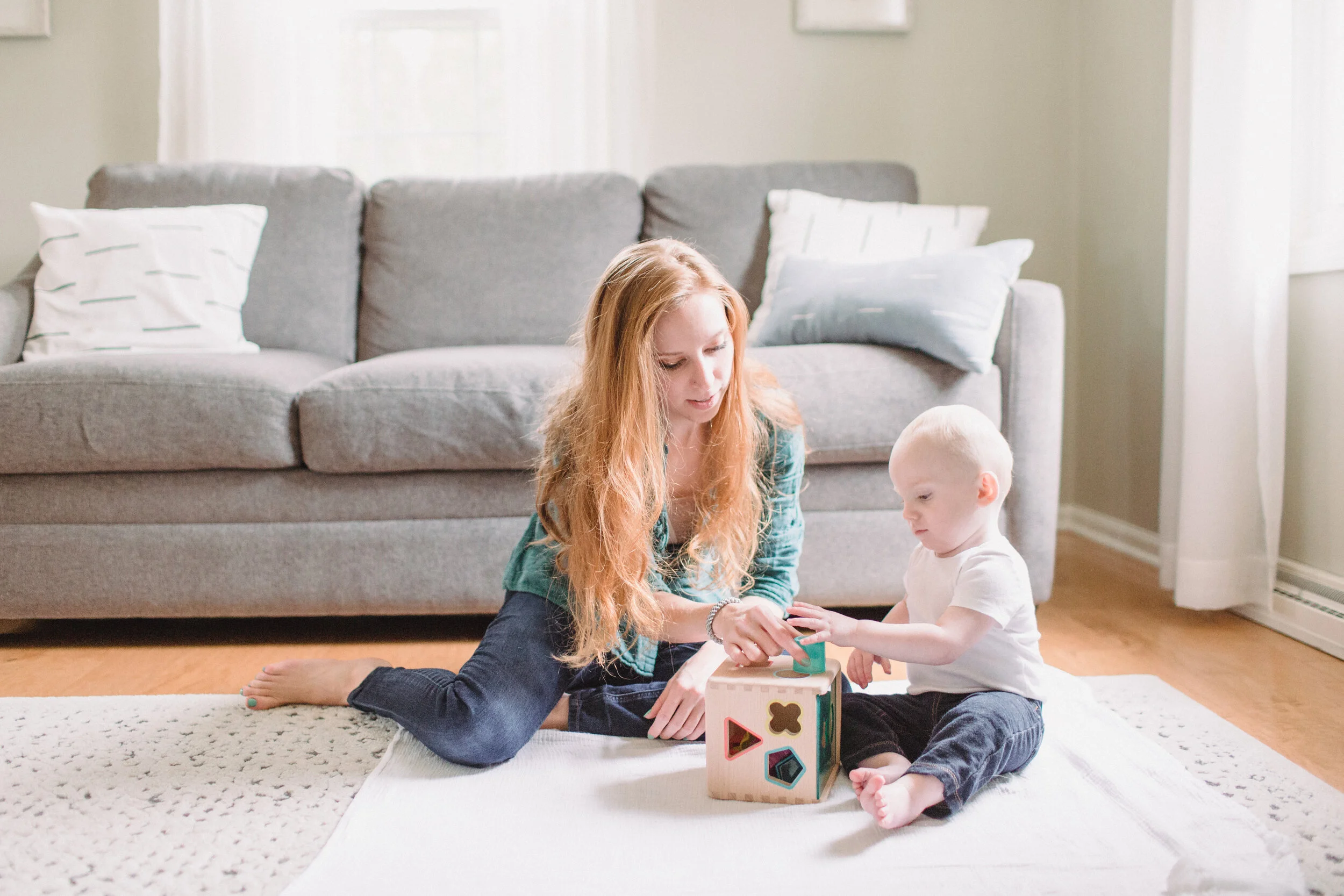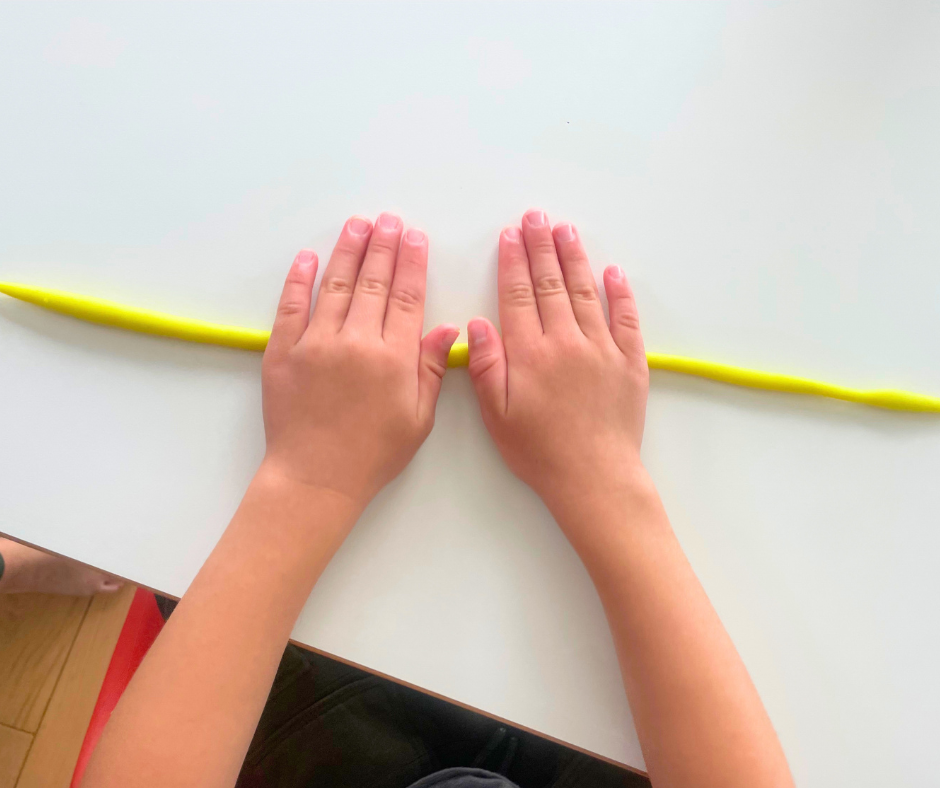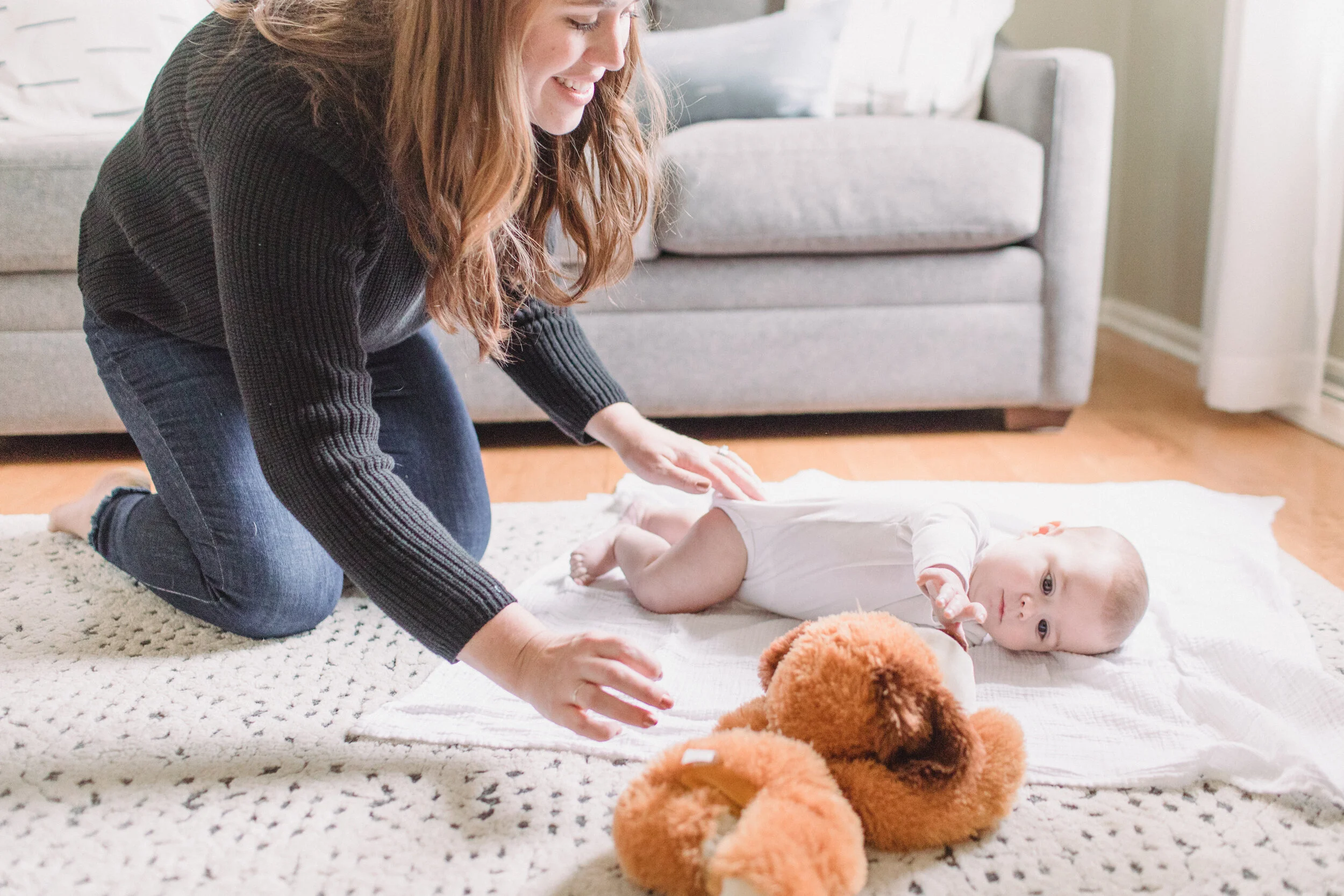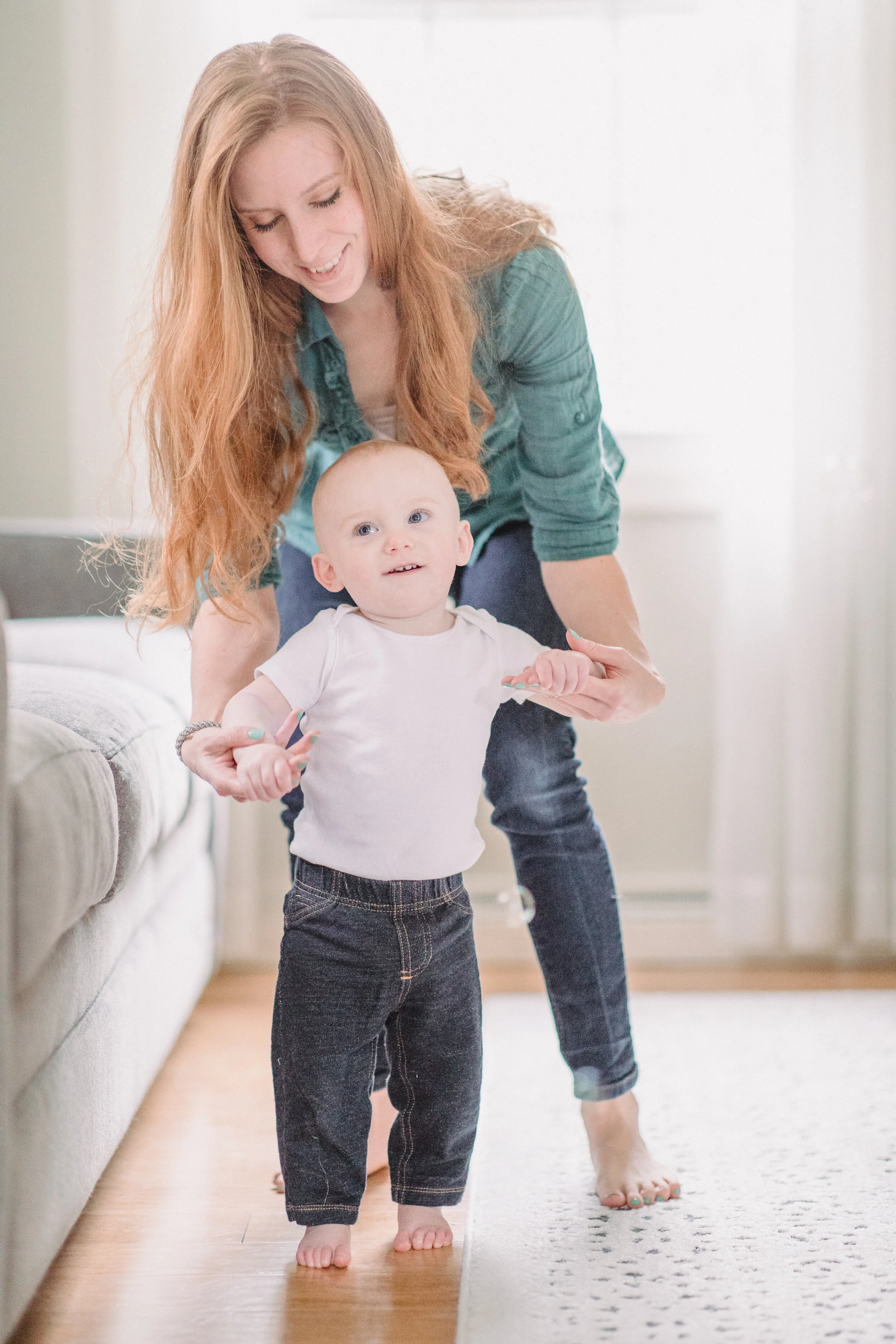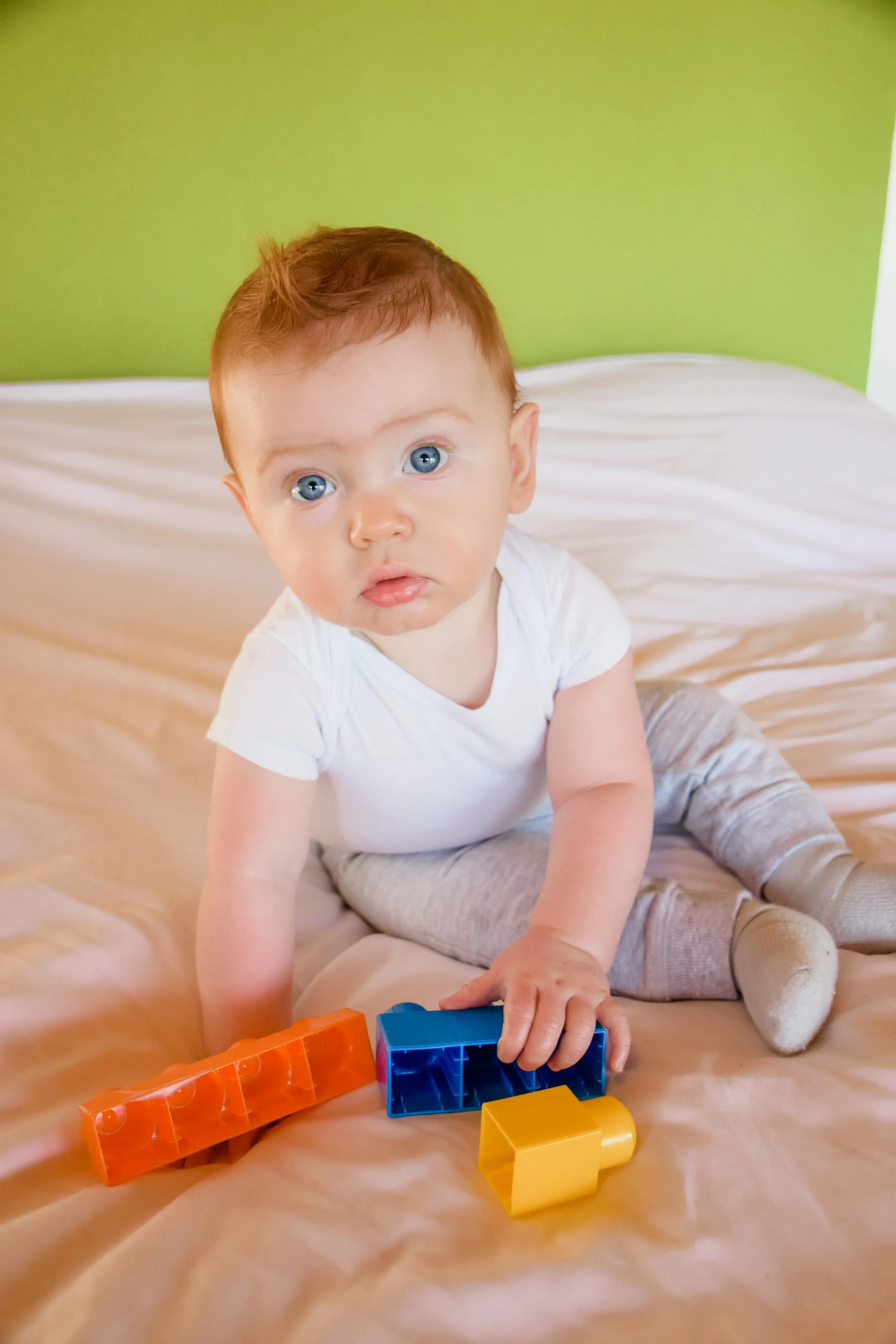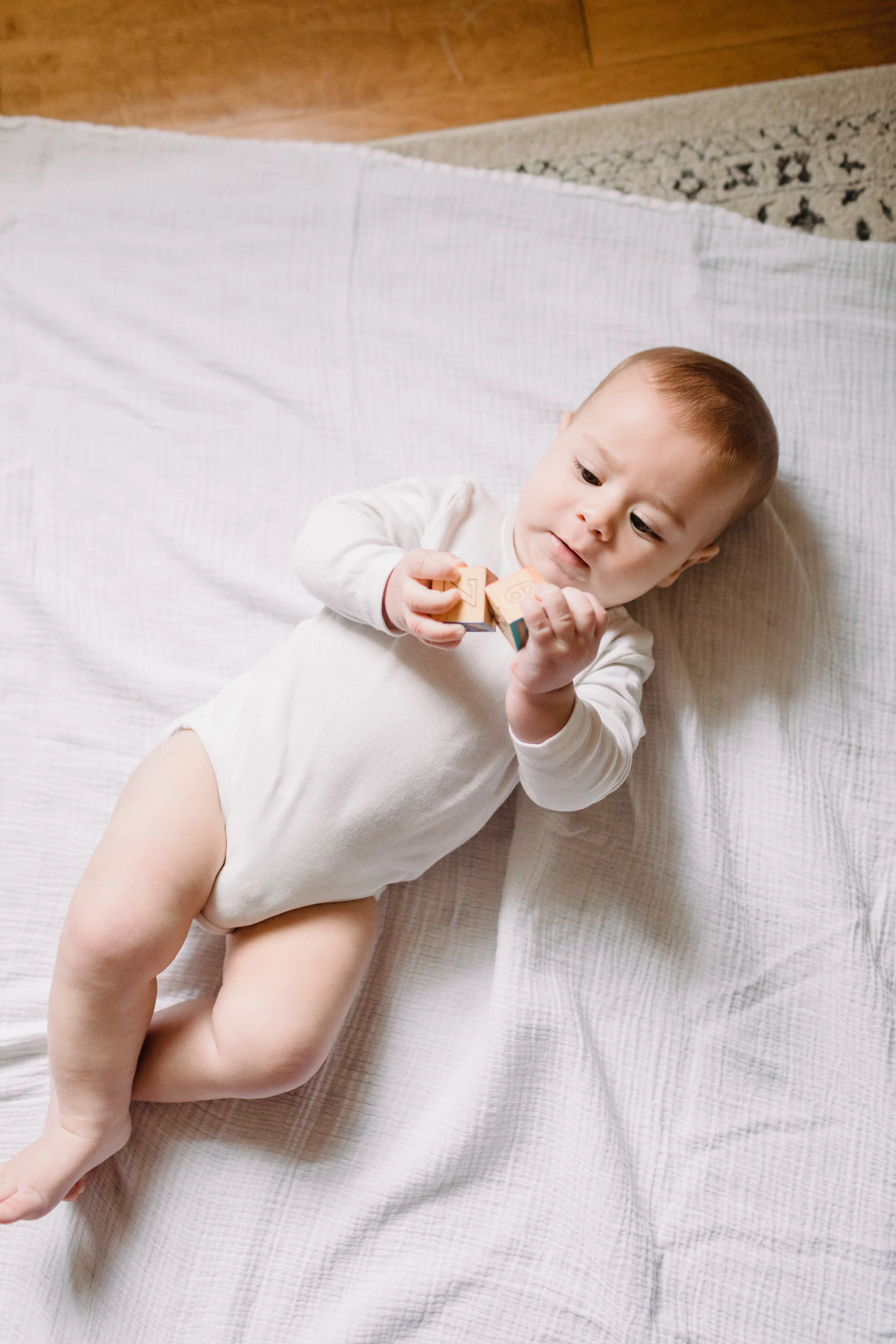Activities to help prepare your child’s hands for writing
New Clinic is Open!
My child is so close to walking, but won’t!
“My child LOVES pulling up to stand and is walking along our couch, but they just won’t try to walk independently!”
*Guest blog
In my role as a Pediatric Physical Therapist, I have had this conversation countless numbers of times over the past 12 years. Walking is a complex motor skill with the typical emergence starting at 12 months. Walking is a big deal for our little ones as it requires the greatest level of strength and stability to stay balanced against gravity!
There has been some great content on Sprout + Thrive about play positions to prepare your child for walking for those early movers who need more work with getting upright.* For the purpose of this article, I want to take it to the next step (literally!). If your child is close to their first birthday and you are wondering how ready they are to start walking by themselves, consider a few of these questions:
Can your child easily pull-up to a standing position by stepping forward with one leg?
Can your child pull-up to stand at a flat surface (i.e. the wall or your kitchen cabinets) or do they still need some extra arm support provided by a couch or table?
Can your child cruise (walk or sidestep) along furniture?
Is your child able to let go with (at least) 1 hand to play in a standing position?
Is your child able to walk with a push toy?
If you answered ‘yes’ to the majority of these questions; your little one is likely READY!
Walking involves many body systems including our vision, our vestibular system (the balance system in the ears and brain), and our musculoskeletal system. These three systems work together to help our bodies learn how to stay balanced and react to changes in our center of gravity as we start to move through space. There is a lot quietly going on under the surface of our complex bodies as we attempt to move, considering our little one’s only motivation for movement is to ‘go get that toy’ or ‘snuggle Mama.’
I’d like to share some of my favorite PT activities with you to get your mover to the next level. Without diving too deep into the science behind each activity, please know that as a Pediatric Physical Therapist I carefully craft activities and ideas to support progression and growth in each of the abovementioned body systems with the goal of more safe, independent and efficient walking.
Have your child work along a flat surface (i.e. the sliding glass door or the refrigerator). Practice putting on and taking off reusable stickers or magnets. Bonus: Try to find items that have some extra ‘stick’ on them as the attempt to pull them off will create some additional balance challenges!
Work on climbing skills, but have your child put weight through their feet & not their knees! Sometimes, kiddos need a little more work with getting input into those feet muscles as they are the first line of defense in our balance systems when standing. One way to encourage this would be to have your child climb up the stairs and help them place a foot on the next step instead of a knee!
Instead of cruising along surfaces set up activities to practice having your little mover go between surfaces. For example, place an ottoman your child’s arm length away from the couch. This way they can easily reach both surfaces, but they have to get a bit more fancy with their balance by turning, letting go with 1 hand, and taking a small step towards the other surface. As your child becomes more comfortable and proficient with this set up, slowly increase the distance they need to travel.
Practice activities that require them to be on 1 leg for a brief period of time as this is a great way to challenge & grow their balance systems. Age appropriate ideas include: getting on/off a riding toy, stepping in and out of a small box (with their hands on the box for support), stepping up onto an elevated surface.
My motto is always to play & have fun!! Kids learn motor movements best when they are actively participating and engaged.
* This blog post was written and submitted by guest Author, Jennifer Bastian, for Sprout and Thrive.
Ms. Jen
Jennifer Bastian, PT, DPT, C/NDT
Follow Me on Facebook and Instagram
We’re Jaclyn & Bree
Pediatric therapists and moms with a mission to empower you with knowledge to encourage your baby’s development and continue confidently into your parenthood journey.
If you have any questions, please feel free to leave a comment below and we will get back to you. As always, the information we share is meant to provide general education and tips and is not intended as medical advice. If you have a specific question or concern about your child’s development, please speak directly to your child’s doctor or therapist.
Mouthing on Toys and Oral-Motor Development
Why should I encourage mouthing on toys?
While it can be frustrating (and unsanitary!) at times, mouthing toys is important for baby's development for many reasons. Babies typically begin to explore fingers and toys in their mouth around 4-5 months of age. This mouthing behavior tends to peak midway through the second half of baby's first year and fades gradually over time.
Through mouthing, baby is leaning about:
Properties of objects: size, texture, shape, taste
Oral-motor skills: chewing (jaw strength), tongue movement side-to-side.
Strengthening and refining movements for eating and later speech sound development
Oral desensitization: Texture, pressure and movement in a controlled way to prep for transition to foods
Calming and self-soothing
Quick Note on Mouthing and Pacifier Use
Pacifier use, especially during waking hours and while playing, can greatly limit a child’s opportunity to mouth toys and reap the benefits mentioned above. When baby has a pacifier in their mouth they are either using a static bite with the font gums/teeth and retracting tongue far back in the mouth or suckling with the tongue to keep the pacifier from falling out of the mouth. Both are restricting tongue movement and limiting opportunities for practice moving the tongue freely in the mouth to develop more mature motor patterns for swallowing and speech sound development.
Around 5 months of age, when baby can sit supported in a highchair and bring toys to their mouth, offering teething toys is a great option for calming and self-regulation. Baby can explore the toy, bite down and chew as they learn to self-soothe instead of offering a pacifier. Baby will learn to self-soothe in this way while also working on improving strength, coordination, and sensory components needed to progress oral-motor skills- win, win!
More to come on pacifier use in another post, stay tuned!
When looking for a good teething/mouthing toy, look for these characteristics:
Lightweight and easy for baby to manipulate
Large enough to not be a choking hazard
Small protrusion that can easily be placed farther back in the mouth for chewing practice at the molar area (not just front and center)Variety of smooth and bumpy textures and firmness
Easily washable and durable for when teeth come in
See our post on the Top Feeding Products we recommend to see which teething toys are our favorite to use with babies around 5 months on up. You can also scroll through our post on starting solids here for HOW to use teethers as a tool to help baby transition to more advanced textures.
Gagging
Mouthing can lead to gagging at times, but unless excessive or often leading to vomiting, gagging is a very normal (and helpful!) reflex that baby will need to work through for purees and solids to be eaten well. Help your baby work through gagging episodes by staying calm and briefly labeling what just happened “Wow! You moved that toy too far back. Here, try again.” Try not to make it a big deal, and baby will likely move right along and try again.
Keep in Mind
When babies are in a mouthing phase (and beyond) it is so very important to ensure your home is free of items small enough to choke on. My favorite rule of thumb- if it can fit through a TP roll, it's too small for baby to have access to. Accidental poisoning is also a concern, so now is the perfect time to add child locks to your cabinets in the kitchen and bathroom and get those chemicals up away from baby’s reach. We like these locks here.
Mouthing can seem like it lasts forever, but before you know it, baby will have moved on to using their hands to explore and manipulate toys in so many different ways. Like all things in motherhood, it will seem long in the moment, but a blip in time once you’re through it. Encourage baby to mouth on safe, non-toxic toys and their fingers and watch those mouth skills blossom.
Jaclyn, SLP
We’re Jaclyn & Bree
Pediatric therapists and moms with a mission to empower you with knowledge to encourage your baby’s development and continue confidently into your parenthood journey.
If you have any questions, please feel free to leave a comment below and we will get back to you. As always, the information we share is meant to provide general education and tips and is not intended as medical advice. If you have a specific question or concern about your child’s development, please speak directly to your child’s doctor or therapist.
Favorite Products- Feeding
Travel Tips for Road Tripping with a Baby
Floor Play Ideas for Every Stage of Development
Parents often hear that tummy time is important for babies but research supports that floor play is actually very important for every stage of baby’s motor development. That’s why we’re passionate about our “The Floor Builds the Core™” concept which states that a baby gets stronger and masters motor skills by learning how to move in and out of positions while they’re on the floor.
More info here on the movement science behind our “The Floor Builds the Core™” framework.
The Floor Builds the Core™
Babies learn how to move by moving. It’s as simple as that!
"The Floor Builds the Core™" is the concept that a baby gets stronger and masters motor skills by learning how to move in and out of positions while they’re on the floor. Science supports that unrestricted natural floor play gives a baby's body the most opportunities to try out and master new motor skills.
Play on the floor allows baby to move in and out of a variety of positions, called transitions. It provides opportunities for motor learning and mastery of skills through trial and error. This is how baby masters a motor skill and moves on to the next one.
Play to Prepare for Walking
Babies need to progress through motor skills to master them and then build on them. Strength and endurance are gained through play in preparatory positions like kneeling, squatting, cruising, or walking behind a push toy. Most parents are dying to celebrate first steps, but don’t rush it! Here are some fun and easy ways to play to strengthen baby for first steps.
How to Play with a Wobbly Sitting Baby
Did you know that sitting is only functional if you can do something there - like reach or watch something? Well, being placed in sitting but not being able to do anything, reach for anything, play, or get in and out of the position isn’t very functional for baby. And you know we’re all about functional play around here! Below you’ll find ways to play with your babe throughout the progression of learning to sit .
Reading with a Baby - Play Ideas for the First Year
Children who are read to regularly at home throughout early childhood will be exposed to exponentially more words than their peers who are not regularly read to. By the time they reach kindergarten, children will have heard 290,000 more words if read 1 book each day and 1.4 million more words if read 5 books each day (Logan, et al., 2019). Here you’ll find ideas on HOW TO read with a baby from birth through the first year.
Play Activities for Baby Hands
Did you know that hand skills are developed through crawling? It's true! Crawling develops the upper body and the arches of the hands which later helps with holding a fork, writing, tying shoes and lots more! Here, you’ll find simple play ideas to help develop baby hands from birth through the first year.
Baby's Hands - The Foundation to Dexterity
Keeping Baby Busy While Working From Home
Signing with Babies
The Power of Baby Sign Language - A Book Review
Our friend, Elise Tate, just released her first book called Sign Me Up for a Happy Home. It’s filled with 15 baby signs and is full of great illustrations and written examples of how to do and remember each sign. Check it out here!
New Parent Hacks - How to Avoid Baby Containers and Still Get Through Your Day
So you read our post on avoiding baby containers and now you’re wondering how you’ll get through a busy day while still sneaking in a shower or making dinner without using all of the baby contraptions like a swing, bouncer, exersauser, jumper, or Bumbo? We’ve got you covered!
Baby Containers - How and Why to Avoid Them
Baby gear/contraptions/containers all refer to a piece of equipment that puts a baby into a position and keeps them there. Gear like a swing, bouncer, exersaucer, jumper, or Bumbo. Most of this gear puts baby into a position they are not yet ready to maintain on their own and can not get into/out of on their own - meaning it’s not developmentally appropriate for them. Containers prevent a baby from moving in and out of positions naturally! Developmentally speaking, the devices pictured above, generally put babies into positions their little bodies are not yet ready for and they prevent baby from freely moving.
Sitting - How to Teach a Baby to Sit
How to Choose a High Chair
Tips for choosing the best highchair positioning for your baby. Optimal positioning for feeding can help baby feel more secure and set you both up for mealtime success. Browse our favorite highchairs or get ideas for how to modify your current highchair to best fit your baby’s needs before starting solids.

